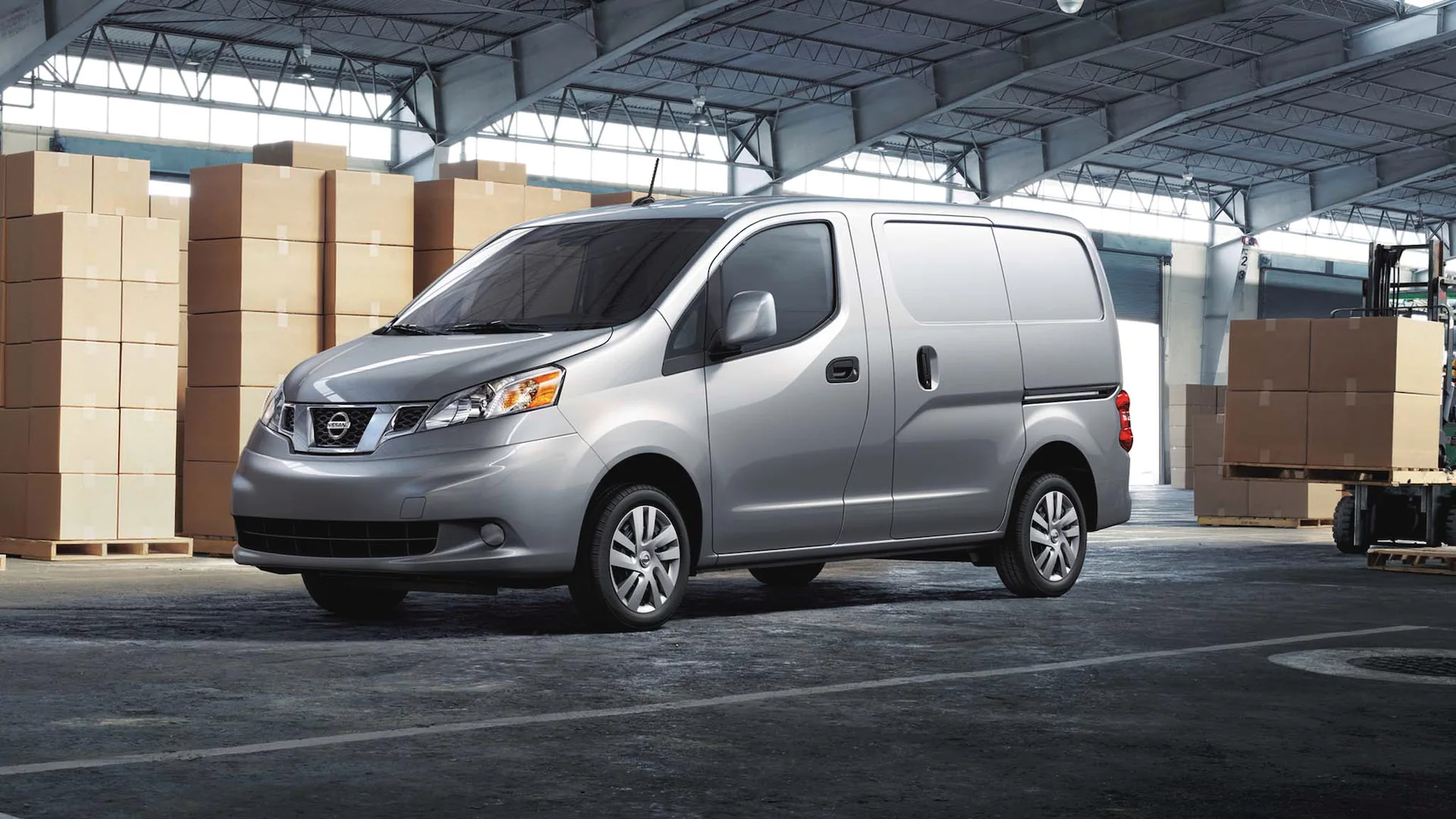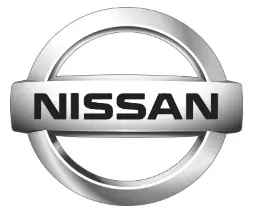Nissan NV200 Compact Cargo 2020
The Nissan NV200 Compact Cargo 2020 continues to serve as a versatile and efficient commercial van, designed to meet the needs of small businesses and professionals in urban environments. It offers a compact size, excellent maneuverability, and a range of features to enhance productivity. Here are some key features and highlights of the Nissan NV200 Compact Cargo 2020:
- Compact Size: The NV200 Compact Cargo 2020 maintains its compact size, which makes it easy to navigate through crowded city streets and tight parking spaces. Its small footprint allows for enhanced maneuverability, making it ideal for urban delivery and service businesses.
- Efficient Performance: The NV200 Compact Cargo 2020 is powered by a 2.0-liter four-cylinder engine, delivering 131 horsepower and 139 lb-ft of torque. This engine provides a balance of power and fuel efficiency, ensuring optimal performance for daily driving in urban environments.
- Generous Cargo Capacity: Despite its compact size, the NV200 Compact Cargo 2020 offers a generous cargo capacity. It provides up to 122.7 cubic feet of cargo space, allowing for the transport of various items and equipment. The cargo area features a flat loading floor and tall cargo height for easy loading and unloading.
- Sliding Side Doors: The NV200 Compact Cargo 2020 is equipped with sliding side doors on both sides, facilitating convenient access to the cargo area. This feature enables easy loading and unloading, even in tight spaces or when parked close to other vehicles.
- Comfortable and Functional Interior: The NV200 Compact Cargo 2020 features a comfortable and functional interior designed to enhance driver comfort and productivity. It offers supportive seating, user-friendly controls, and ample storage compartments for organizing tools and paperwork. Available features include power windows and locks, keyless entry, and a navigation system.
- Advanced Technology Features: The NV200 Compact Cargo 2020 incorporates modern technology features to improve connectivity and convenience. It offers Bluetooth connectivity for hands-free calling and audio streaming, as well as an available 7-inch touchscreen infotainment system with navigation.
- Safety Features: Safety remains a priority in the NV200 Compact Cargo 2020. It comes equipped with standard safety features such as antilock brakes, stability control, and front-seat side-impact airbags. Additionally, available features like a rearview camera and rear parking sensors provide added assistance during maneuvering and parking.
These are some of the key features and highlights of the Nissan NV200 Compact Cargo 2020 model. For more specific details and to explore the available configurations and options, I recommend visiting Nissan’s official website or contacting a Nissan dealership for the most accurate and comprehensive information.
CRUISE CONTROL
(if so equipped)
PRECAUTIONS ON CRUISE CONTROL
- CANCEL switch
- ACCEL/RES switch
- COAST/SET switch
- ON/OFF switch
- If the cruise control system malfunctions, it cancels automatically.
- To properly set the cruise control system, use the following procedures.
WARNING
Do not use the cruise control when driving under the following conditions:
- When it is not possible to keep the vehicle at a set speed.
- In heavy traffic or in traffic that varies in speed.
- On winding or hilly roads.
- On slippery roads (rain, snow, ice, etc.).
- In very windy areas.
Doing so could cause a loss of vehicle control and result in an accident.
CRUISE CONTROL OPERATIONS
The cruise control allows driving at a speed between 30 – 89 mph (48 – 144 km/h) without keeping your foot on the accelerator pedal.
To turn on the cruise control, push the ON/OFF switch. The CRUISE indicator light in the instrument panel comes on.
To set cruising speed, accelerate the vehicle to the desired speed, push the COAST/SET switch and release it. Take your foot off the accelerator pedal. Your vehicle maintains the set speed.
- To pass another vehicle, depress the accelerator pedal. When you release the pedal, the vehicle returns to the previously set speed.
- The vehicle may not maintain the set speed when going up or down steep hills. If this happens, drive without cruise control.
- To cancel the preset speed,
use one of the following three methods: - Push the CANCEL switch.
- Tap the brake pedal.
- Push the ON/OFF switch. The CRUISE indicator light in the instrument panel will go out.
The cruise control is automatically canceled if: - You depress the brake pedal while pushing the ACCEL/RES or COAST/SET switch. The preset speed is deleted from memory.
- The vehicle slows down more than 8 mph (13 km/h) below the set speed.
- You move the shift lever to N (Neutral).
To reset at a faster cruising speed, use one of the following three methods:
- Depress the accelerator pedal. When the vehicle attains the desired speed, push and release the COAST/SET switch.
- Push and hold the ACCEL/RES switch. When the vehicle attains the speed you desire, release the switch.
- Push and release the ACCEL/RES switch. Each time you do this, the set speed increases by about 1 mph (1.6 km/h).
To reset at a slower cruising speed, use one of the following three methods: - Lightly tap the brake pedal. When the vehicle attains the desired speed, push the COAST/SET switch and release it.
- Push and hold the COAST/SET switch. Release the switch when the vehicle slows to the desired speed.
- Push and release the COAST/SET switch. Each time you do this, the set speed decreases by about 1 mph (1.6 km/h). To resume the preset speed, push and release the ACCEL/RES switch. The vehicle returns to the last set cruising speed when the vehicle speed is over 30 mph (48 km/h).
BREAK-IN SCHEDULE
CAUTION
During the first 1,200 miles (2,000 km), follow these recommendations to obtain maximum engine performance and ensure the future reliability and economy of your new vehicle. Failure to follow these recommendations may result in shortened engine life and reduced engine performance.
- Avoid driving for long periods at a constant speed, either fast or slow, and do not run the engine over 4,000 rpm.
- Do not accelerate at full throttle in any gear.
- Avoid quick starts.
- Avoid hard braking as much as possible.
FUEL EFFICIENT DRIVING TIPS
Follow these easy-to-use Fuel Efficient Driving Tips to help you achieve the most fuel economy from your vehicle.
- Use Smooth Accelerator and Brake Pedal Application
- Avoid rapid starts and stops.
- Use a smooth, gentle accelerator and brake application whenever possible.
- Maintain constant speed while commuting and coast whenever possible.
- Maintain Constant Speed
- Look ahead to try and anticipate and minimize stops.
- Synchronizing your speed with traffic lights allows you to reduce your number of stops.
- Maintaining a steady speed can minimize red light stops and improve fuel efficiency.
- Use Air Conditioning (A/C) at Higher Vehicle Speeds
- Below 40 mph (64 km/h), it is more efficient to open windows to cool the vehicle due to reduced engine load.
- Above 40 mph (64 km/h), it is more efficient to use A/C to cool the vehicle due to increased aerodynamic drag.
- Recirculating the cool air in the cabin when the A/C is on reduces the cooling load.
- Drive at Economical Speeds and Distances
- Observing the speed limit and not exceeding 60 mph (97 km/h) (where legally allowed) can improve fuel efficiency due to reduced aerodynamic drag.
- Maintaining a safe following distance behind other vehicles reduces unnecessary braking.
- Safely monitoring traffic to anticipate changes in speed permits reduced braking and smooth acceleration changes.
- Select a gear range suitable to road conditions.
- Use Cruise Control
- Using cruise control during highway driving helps maintain a steady speed.
- Cruise control is particularly effective in providing fuel savings when driving on flat terrains.
- Plan for the Shortest Route
- Utilize a map or navigation system to determine the best route to save time.
- Avoid Idling
- Shutting off your engine when safe for stops exceeding 30–60 seconds saves fuel and reduces emissions.
- Buy an Automated Pass for Toll Roads
- Automated passes permit drivers to use special lanes to maintain cruising speed through the toll and avoid stopping and starting.
- Winter Warm Up
- Limit idling time to minimize impact to fuel economy.
- Vehicles typically need no more than 30 seconds of idling at start-up to effectively circulate the engine oil before driving.
- Your vehicle will reach its ideal operating temperature more quickly while driving versus idling.
- Keeping your Vehicle Cool
- Park your vehicle in a covered parking area or in the shade whenever possible.
- When entering a hot vehicle, opening the windows will help to reduce the inside temperature faster, resulting in reduced demand on your A/C system.
INCREASING FUEL ECONOMY
- Keep your engine tuned up.
- Follow the recommended scheduled maintenance.
- Keep the tires inflated to the correct pressure. Low tire pressure increases tire wear and lowers fuel economy.
- Keep the wheels in the correct alignment. Improper alignment increases tire wear and lowers fuel economy.
- Use the recommended viscosity engine oil. For additional information, refer to “Engine oil and oil filter recommendation” in the “Technical and consumer information” section of this manual.
PARKING/PARKING ON HILLS
WARNING
- Do not stop or park the vehicle over flammable materials such as dry grass, waste paper or rags. They may ignite and cause a fire.
- Safe parking procedures require that both the parking brake be set and the transmission placed into P (Park). Failure to do so could cause the vehicle to move unexpectedly or roll away and result in an accident. Make sure the shift lever has been pushed as far forward as it can go and cannot be moved without depressing the foot brake pedal.
- Never leave the engine running while the vehicle is unattended.
- Do not leave children unattended inside the vehicle. They could unknowingly activate switches or controls or make the vehicle move. Unattended children could become involved in serious accidents.
- To help avoid risk of injury or death through the unintended operation of the vehicle and/or its systems, do not leave children, people who require the assistance of others or pets unattended in your vehicle. Additionally, the temperature inside a closed vehicle on a warm day can quickly become high enough to cause a significant risk of injury or death to people and pets.
- Firmly apply the parking brake.
- Move the shift lever to the P (Park) position.
- To help prevent the vehicle from rolling into traffic when parked on an incline, it is a good practice to turn the wheels as illustrated.
- HEADED DOWNHILL WITH CURB A :
Turn the wheels into the curb and move the vehicle forward until the curb side wheel gently touches the curb. - HEADED UPHILL WITH CURB B :
Turn the wheels away from the curb and move the vehicle back until the curb side wheel gently touches the curb. - HEADED UPHILL OR DOWNHILL, NO CURB C :
Turn the wheels toward the side of the road so the vehicle will move away from the center of the road if it moves.
- HEADED DOWNHILL WITH CURB A :
- Place the ignition switch in the LOCK position.
-
Reference Link
Download Manuals: https://www.nissanusa.com/owners/ownership/manuals-guides.html


